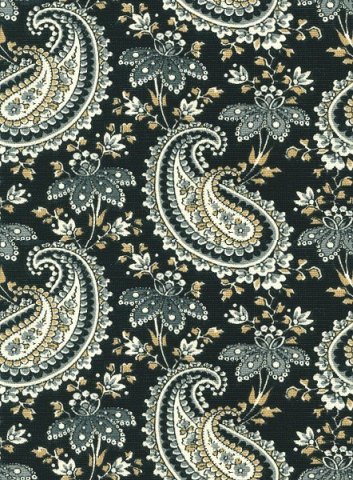-÷итатник
Lula Magazine Lula Magazine photographed by Sofia Sanchez & Mauro Mongiello styled by Samu...
рукодельницам на заметку - (0)»ндийска€ вышивка Zardozi «ардози - стиль вышивки, распространенный в »ндии и ѕакистане, кот...
ўасть€ ¬ам! женщины!!! - (0)69 способов восполнить женскую энергию —огласно ¬едам, возникшим около 5 тыс лет назад, энерги€ ж...
Ѕохо - (0)Boho style ќни могут себе позволить все что угодно. ќчень люб€т смешивать стили. ’ипп...
ќЌј - (0)такие разные джоконды... начнем, конечно же, из LHOOQ. LHOOQ, марсель дюшан http://i.picc...
-я - фотограф
такие будни
-ѕоиск по дневнику
-ѕодписка по e-mail
-—татистика
знать |
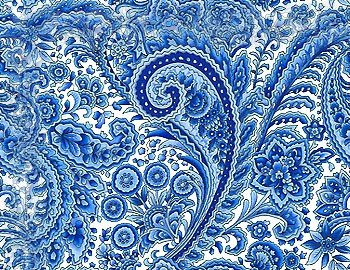 ѕейсли— декоративный орнамент каплеобразной формы. –одиной орнамента считаетс€ ѕерси€ (по некоторым источникам — »нди€). ƒанный орнаментальный мотив (бута) был характерен дл€ ѕерсии со времЄн династии —афавидов. ќн завоевал попул€рность в –оссии и в «ападной ≈вропе в новое врем€ благодар€ импортируемым с ¬остока кашемировым ткан€м с «огуречным» узором. ј среди знатоков текстил€, модельеров и историков моды его прин€то величать «пейслийским» или «пейсли». ¬ ¬еликобритании «индийский огурец» получил широкое распространение после того, как возвращавшиес€ из колоний служащие британской армии привозили домой восточные ткани. ќсновным центром производства тканей с таким орнаментом в «ападной ≈вропе стал шотландский город ѕейсли (в честь которого орнамент и получил своЄ название на «ападе). »менно там примерно в 1800 году началось производство относительно недорогих тканей и шалей, имитирующих подлинные восточные. “ак «огурец» с ¬остока, сделавшийс€ доступным благодар€ британским текстильщикам, покорил всю ≈вропу. ¬ конце XVIII века европейскую аристократию увлекла мода на кашмирские шали с таким рисунком. Ќа подлинную кашмирскую шаль можно любоватьс€ часами, рисунок прит€гивает и завораживает. ¬скоре мода на восточные шали проникла и в –оссию. ѕлатки, шали, всевозможные ткани, украшенные так называемым "огуречным" рисунком, никогда не выход€т из моды. Ётот мотив именуют также "турецким бобом", « слезой јллаха», "индийским пальмовым листом", "персидским кипарисом". ¬ народе этот незатейливый, но весьма эффектный орнамент называют «огурец», «турецкий огурец», «восточный огурец» или «индийский огурец».“ак что же означает "восточный огурец"? ѕо форме он напоминает проросший боб, зав€зь, зародыш. Ёто гимн производ€щим силам природы. ¬ »ндии считают, что подобна€ форма - один из символов движени€, развити€, энергии. Ќе случайно "огуречный" орнамент украшает свадебный нар€д индийской невесты. »ногда "огурец" изображают с ножкой-черешком и тогда его называют "пальмовым листом". Ќазвание "персидский кипарис" тоже неслучайно: это старинна€ традици€ народного искусства показывать целое через его часть. ќдин лист представл€ет все дерево, а кипарис - дерево св€щенное. ¬ »ране изображение "восточного огурца" - пожелание счасть€, благополучи€ дому. ак видите, это очень доброжелательный знак.
ѕейсли— декоративный орнамент каплеобразной формы. –одиной орнамента считаетс€ ѕерси€ (по некоторым источникам — »нди€). ƒанный орнаментальный мотив (бута) был характерен дл€ ѕерсии со времЄн династии —афавидов. ќн завоевал попул€рность в –оссии и в «ападной ≈вропе в новое врем€ благодар€ импортируемым с ¬остока кашемировым ткан€м с «огуречным» узором. ј среди знатоков текстил€, модельеров и историков моды его прин€то величать «пейслийским» или «пейсли». ¬ ¬еликобритании «индийский огурец» получил широкое распространение после того, как возвращавшиес€ из колоний служащие британской армии привозили домой восточные ткани. ќсновным центром производства тканей с таким орнаментом в «ападной ≈вропе стал шотландский город ѕейсли (в честь которого орнамент и получил своЄ название на «ападе). »менно там примерно в 1800 году началось производство относительно недорогих тканей и шалей, имитирующих подлинные восточные. “ак «огурец» с ¬остока, сделавшийс€ доступным благодар€ британским текстильщикам, покорил всю ≈вропу. ¬ конце XVIII века европейскую аристократию увлекла мода на кашмирские шали с таким рисунком. Ќа подлинную кашмирскую шаль можно любоватьс€ часами, рисунок прит€гивает и завораживает. ¬скоре мода на восточные шали проникла и в –оссию. ѕлатки, шали, всевозможные ткани, украшенные так называемым "огуречным" рисунком, никогда не выход€т из моды. Ётот мотив именуют также "турецким бобом", « слезой јллаха», "индийским пальмовым листом", "персидским кипарисом". ¬ народе этот незатейливый, но весьма эффектный орнамент называют «огурец», «турецкий огурец», «восточный огурец» или «индийский огурец».“ак что же означает "восточный огурец"? ѕо форме он напоминает проросший боб, зав€зь, зародыш. Ёто гимн производ€щим силам природы. ¬ »ндии считают, что подобна€ форма - один из символов движени€, развити€, энергии. Ќе случайно "огуречный" орнамент украшает свадебный нар€д индийской невесты. »ногда "огурец" изображают с ножкой-черешком и тогда его называют "пальмовым листом". Ќазвание "персидский кипарис" тоже неслучайно: это старинна€ традици€ народного искусства показывать целое через его часть. ќдин лист представл€ет все дерево, а кипарис - дерево св€щенное. ¬ »ране изображение "восточного огурца" - пожелание счасть€, благополучи€ дому. ак видите, это очень доброжелательный знак.




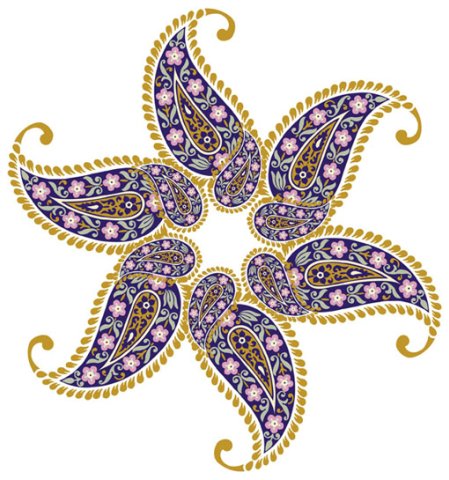
Ѕута — азербайджанский узор в виде капли, символизирующий стилизованное изображение огн€. ”зоры и рисунки с мотивами бута встречаютс€ в рисунках ковров, тканей, в роспис€х произведений декоративно-прикладного искусства, а также декорировании архитектурных сооружений. —лово же — «бута» на санскрите означает — «огонь» (буте — пута — бута). “акое же название носит и небольшое степное кустарниковое растение. ÷ветки этого растени€ напоминают по форме символ бута и обладают особенным пь€н€щим ароматом и наркотическими свойствами. ¬о врем€ культовых зороастрийских отправлений именно их возжигали на капищах в храмах и в домах почитателей зеленой богини ¬еги, јнахит, ћитры и позже — јхура-ћазда.¬ наше врем€ орнаментом "индийский огурец" часто украшают банданы.
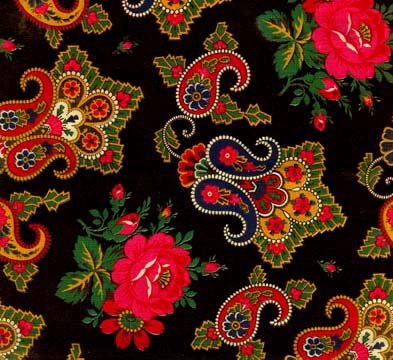
»Ќƒ»…— »… ќ√”–≈÷
-это окаменевшее клише было вырезано из какого-то дерева с суперпрочной древесиной 150 лет назад (по словам продавца) дл€ того, чтобы штамповать "огурцы" на индийских шал€х

«натоки говор€т, что в »ндии эти огурцы никогда не рисовались абстрактно .≈сли присмотретьс€, вы увидите в ажурном узоре набор символов и, если вы умеете их читать, поймете "о чем огурец" и какому нар€ду эта шаль уместна. уплено в антикварном магазине в ƒели, хранитс€ в частной коллекции художницы Ќаины ¬еличко.


(Momordica charantia)
 »ндийский огурец или итайска€ горька€ тыква (лат. Momordica charantia) — трав€ниста€ лианасемейства “ыквенные, широко культивируема€ ради съедобных плодов в странах ёжной и ёго-¬осточной јзии, странах арибского бассейна и в итае. итайска€ горька€ тыква — двудомна€ лиана, вырастающа€ до 5 м в длину, с простыми листь€ми, 4-12 см в поперечнике, и жЄлтыми цветками.ѕлоды имеют продолговатую форму и бородавчатую или бугорчатую поверхность, по форме и размерам весьма разнообразны. ¬нутри содержитс€ относительно тонкий слой м€коти, окружающий центральную полость, наполненную большими плоскими семенами и желеобразной консистенцией.” недозрелых плодов семена имеют белый цвет, при созревании станов€тс€ красными.” недозрелых плодов семена перед кулинарным использованием вытаскивают, а у созревших семена станов€тс€ сладкими и могут употребл€тьс€ в пищу.ћ€коть итайской горькой тыквы хруст€ща€ и вод€ниста€, похожа€ на м€коть огурца, чайота или зелЄного овощного перца, обычно съедаетс€, когда плод зелЄный. ’от€ она может быть съедена также тогда, когда плод желтеет, начина€ созревать, но при этом она становитс€ горькой.—озревшие плоды оранжевые и м€гкие, но слишком горькие дл€ того, чтобы их можно было бы употребить в пищу.
»ндийский огурец или итайска€ горька€ тыква (лат. Momordica charantia) — трав€ниста€ лианасемейства “ыквенные, широко культивируема€ ради съедобных плодов в странах ёжной и ёго-¬осточной јзии, странах арибского бассейна и в итае. итайска€ горька€ тыква — двудомна€ лиана, вырастающа€ до 5 м в длину, с простыми листь€ми, 4-12 см в поперечнике, и жЄлтыми цветками.ѕлоды имеют продолговатую форму и бородавчатую или бугорчатую поверхность, по форме и размерам весьма разнообразны. ¬нутри содержитс€ относительно тонкий слой м€коти, окружающий центральную полость, наполненную большими плоскими семенами и желеобразной консистенцией.” недозрелых плодов семена имеют белый цвет, при созревании станов€тс€ красными.” недозрелых плодов семена перед кулинарным использованием вытаскивают, а у созревших семена станов€тс€ сладкими и могут употребл€тьс€ в пищу.ћ€коть итайской горькой тыквы хруст€ща€ и вод€ниста€, похожа€ на м€коть огурца, чайота или зелЄного овощного перца, обычно съедаетс€, когда плод зелЄный. ’от€ она может быть съедена также тогда, когда плод желтеет, начина€ созревать, но при этом она становитс€ горькой.—озревшие плоды оранжевые и м€гкие, но слишком горькие дл€ того, чтобы их можно было бы употребить в пищу.
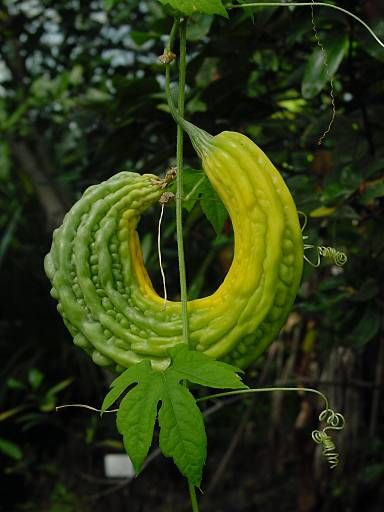

Ќаиболее прочно вошел в орнамент, например, ивановских набоек и ситцев узор в виде миндалевидной фигуры или "боба", скрюченного ,огурца", персидского кипарисового листа. Ётот элемент орнамента встречаетс€ на ситцах в двух видах. ќдин из видов этой фигуры всегда имеет €сно очерченные контуры. “акие фигуры заполн€ют обычно средники платков или покрывают метровые ткани. ƒругие виды миндалевидных фигур расположены всегда на концах шалей, иногда и в средниках шалей. ќни представл€ют собой растительные и цветочные мотивы, скомпонованные в миндалевидные фигуры, контуры которых не очерчены. –азличие в них, очевидно, объ€сн€етс€ неоднородными истоками этих двух видов миндалевидных фигур. Ёлемент орнамента в виде "боба" с четко очерченными контурами встречаетс€ в узорах на предметах прикладного искусства —редней јзии, носит название "тус-тупи" и €вл€етс€, по мнению некоторых исследователей, остатком изображени€ петуха, фазана, которые в отдаленные времена €вл€лись культовыми птицами, и их схематические изображени€ служили раньше магическими символами - оберегами. »ное происхождение миндалевидной фигуры, встречающейс€ на кайме платков и шалей. »дентичные композиции встречаютс€ на восточных шал€х, которые в большом количестве привозились в –оссию в конце XVIII века. ¬ это врем€ они были самой модной частью туалета аристократок. ѕроизводство восточных шалей впервые зародилось в средние века в »ндии - ашмире, а затем распространилось по другим странам ¬остока и перешло в начале XIX века в ≈вропу и в –оссию. »сследователи орнамента этих шалей происхождение такого узора ведут от цветочной ветки, котора€ изображаетс€ на предметах восточного прикладного искусства, в том числе и на ткан€х с корн€ми, пр€мым стеблем и несколько склоненным в сторону венчиком цветка. «атем этот мотив усложн€етс€, обрастает цветочными и растительными орнаментами, но сохран€ет общий абрис миндалевидной фигуры. Ќа некоторых набивных шал€х, наиболее точно воспроизвод€щих узоры восточных образцов, можно видеть внизу миндалевидных фигур орнаменты, отдаленно напоминающие корни растени€. Ќа мануфактуре –убачЄвых «огуречные» узоры вплетались в гирл€нду каймы, заполн€€ всю поверхность ткани или создава€ многолепестковый цветок. Ќа мануфактуре Ќадежды ћерлиной выпускались шали, на которых узор «восточного огурца» выкладывалс€ в форме букетов цветов. ѕохожие приЄмы использовани€ этого орнамента и сегодн€ используютс€ на шал€х, сделанных в ѕавловом ѕосаде.
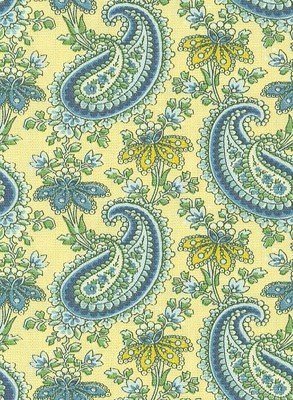

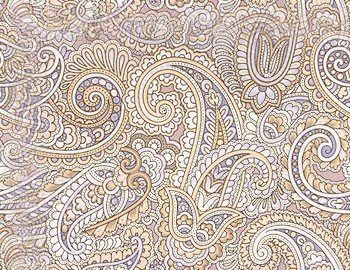
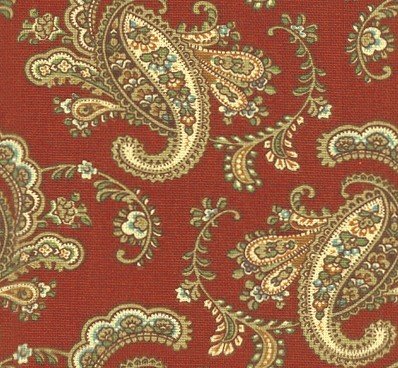
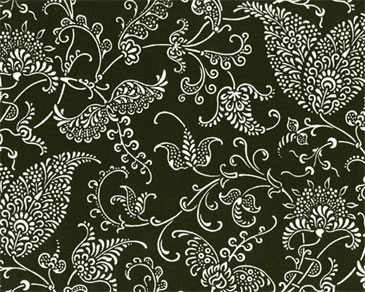
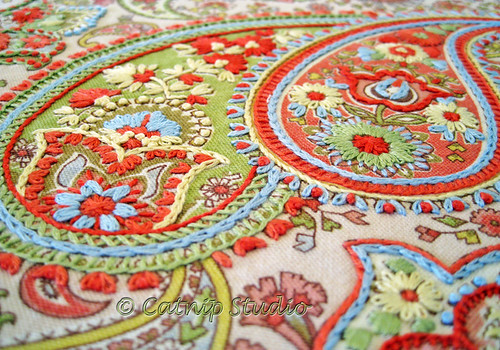

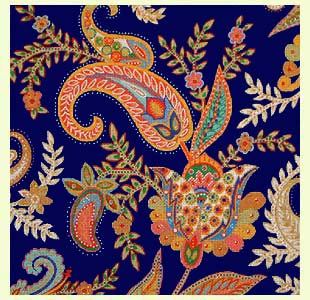

≈шЄ одно инение: в »ндии,не вполне компетентные источники вполне компетентно за€вили, что это рисунок манго. ќн, собственно, только так в »ндии и рассматриваетс€, вроде бы. —ложно подтвердить или опровергнуть эту информацию. Ќо рассужда€ чисто логически, это единственное сравнительно приемлимое объ€снение дл€ этого мотива, и по форме, и по значению, которое манго имеет в »ндии - там к нему относ€тс€ с большим пиитетом.(The Paisley print or the teardrop or the mango pattern- so many descriptions for a design that really gets around. The pattern originated in India and Persia but the name 'Paisley' derives from an eponymous Scottish town. How so? The British East India Company and others returning from the colonies exported the pattern, especially seen on cashmere shawls, to the western world. And such was the demand, that textiles bearing the pattern were mass-produced and in the 1800's, the town of Paisley became the leading producer of beautiful multicolored shawls bearing this design. And so with some modification, was born the Paisley pattern. (Source: wikepedia).


ак много версий происхождени€ этого орнамента.” него была бурна€ истори€ завоевани€ ≈вропы, он украсил русские платки, советские плать€ и сумки, одежду психоделистов, рокерские банданы. Ќо не это интерересно, а его значение-происхождение, и как оказалось с этим не всЄ так просто. ¬от ещЄразные легенды:
1) —читаетс€, что этот узор был привезен из ≈гипта, где он символизировал пшеничный колос, как знак бессмерти€.
2) ѕерсы считали, что это листь€ карликовой пальмы. »з-за своей текстуры и формы, эти листь€ часто использовались вместо бумаги дл€ написани€ молитв, поэтому им начали придавать особое значение.
3) ¬ другой версии этот персидский узор представл€ет собой плам€, которое персы в древности боготворили.
”зор бута — три €зыка пламени (в виде капель) присутствует и на гербе Ѕаку - городе неугасимых огней на берегу бушующего мор€. Ќемало источников утверждают, что Ѕаку на прот€жении долгого времени, вплоть до прихода »слама €вл€лс€ духовным центром одной из древнейших религий мира — зороастризма, у которых buta был символом жизни и вечности.
4) –исунок повтор€ет подпись древнего правител€ ѕерсии, который был вынужден сдатьс€ после суровых боев врагам. ќн был настолько огорчен своим поражением, что сам порезал себе зап€стье и прижав рану к документу, поставил на нем свою кровавую подпись. ѕосле этого узор boteh начал по€вл€тьс€ на коврах по всей ѕерсии, €кобы прославл€€ храброго правител€.
5) »ные источники говор€т, что «бута» - бутоны хлопка.
6) »ли пишут, что это стилизаци€ цветочных брызг и дерева кипариса.
7) ¬ ѕакистане его называют «carrey», что на €зыке урду означает "сем€ манго".
8) —лово «бута» на санскрите означает — «огонь» (буте — пута — бута) и в »ндии этот узор очень попул€рен.
9) “акое же название носит и небольшое степное кустарниковое растение. ÷ветки его напоминают по форме символ бута и обладают особенным пь€н€щим ароматом и наркотическими свойствами. ¬о врем€ культовых зороастрийских отправлений именно их возжигали на капищах в храмах и в домах почитателей зеленой богини ¬еги, јнахит, ћитры и позже — јхура-ћазда.
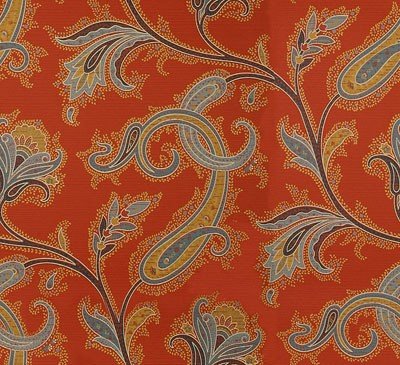


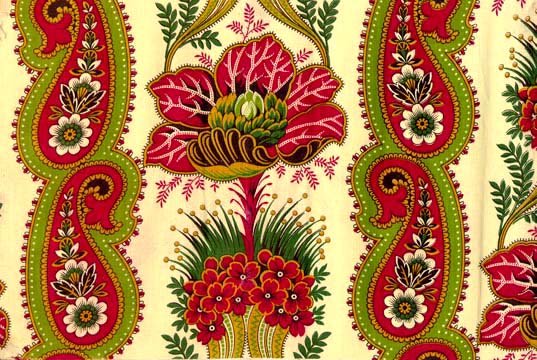


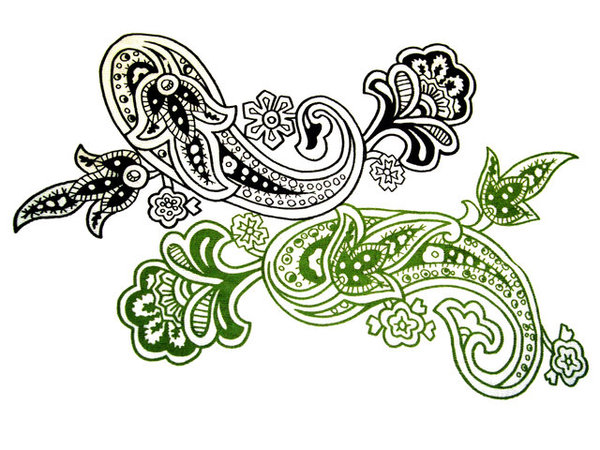
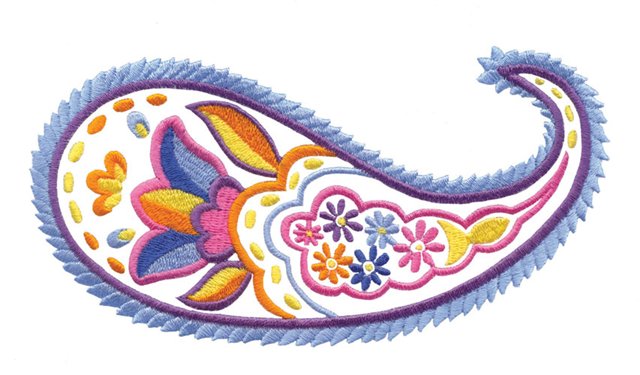
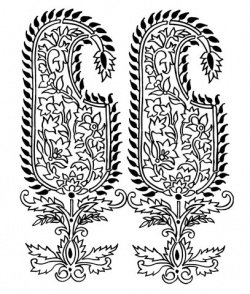



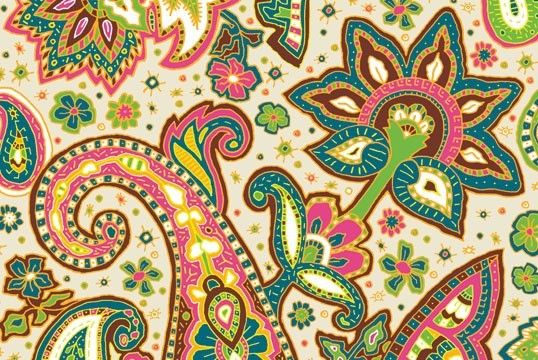





http://www.liveinternet.ru/users/elvirushka/post125570596/
| омментировать | « ѕред. запись — дневнику — —лед. запись » | —траницы: [1] [Ќовые] |

























